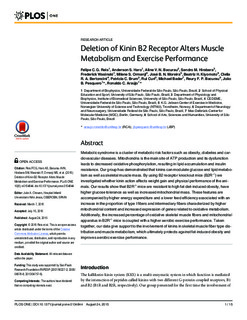| dc.contributor.author | Reis, Felipe CG | |
| dc.contributor.author | Haro, Anderson S | |
| dc.contributor.author | Bacurau, Aline V. | |
| dc.contributor.author | Hirabara, Sandro M | |
| dc.contributor.author | Wasinski, Frederick | |
| dc.contributor.author | Ormanji, Milene S | |
| dc.contributor.author | Moreira, Jose Bianco Nascimento | |
| dc.contributor.author | Kiyomoto, Beatriz H | |
| dc.contributor.author | Bertoncini, Clelia RA | |
| dc.contributor.author | Brum, Patricia Chakur | |
| dc.contributor.author | Curi, Rui | |
| dc.contributor.author | Bader, Michael | |
| dc.contributor.author | Bacurau, Reury FP | |
| dc.contributor.author | Pesquero, Joao B | |
| dc.contributor.author | Araujo, Ronaldo C | |
| dc.date.accessioned | 2015-11-25T08:12:17Z | |
| dc.date.accessioned | 2016-01-15T13:56:19Z | |
| dc.date.available | 2015-11-25T08:12:17Z | |
| dc.date.available | 2016-01-15T13:56:19Z | |
| dc.date.issued | 2015 | |
| dc.identifier.citation | PLoS ONE 2015, 10(8) | nb_NO |
| dc.identifier.issn | 1932-6203 | |
| dc.identifier.uri | http://hdl.handle.net/11250/2374010 | |
| dc.description.abstract | Metabolic syndrome is a cluster of metabolic risk factors such as obesity, diabetes and cardiovascular diseases. Mitochondria is the main site of ATP production and its dysfunction leads to decreased oxidative phosphorylation, resulting in lipid accumulation and insulin resistance. Our group has demonstrated that kinins can modulate glucose and lipid metabolism as well as skeletal muscle mass. By using B2 receptor knockout mice (B2R-/-) we investigated whether kinin action affects weight gain and physical performance of the animals. Our results show that B2R-/- mice are resistant to high fat diet-induced obesity, have higher glucose tolerance as well as increased mitochondrial mass. These features are accompanied by higher energy expenditure and a lower feed efficiency associated with an increase in the proportion of type I fibers and intermediary fibers characterized by higher mitochondrial content and increased expression of genes related to oxidative metabolism. Additionally, the increased percentage of oxidative skeletal muscle fibers and mitochondrial apparatus in B2R-/- mice is coupled with a higher aerobic exercise performance. Taken together, our data give support to the involvement of kinins in skeletal muscle fiber type distribution and muscle metabolism, which ultimately protects against fat-induced obesity and improves aerobic exercise performance. | nb_NO |
| dc.language.iso | eng | nb_NO |
| dc.publisher | Public Library of Science | nb_NO |
| dc.title | Deletion of Kinin B2 receptor alters muscle metabolism and exercise performance | nb_NO |
| dc.type | Journal article | nb_NO |
| dc.date.updated | 2015-11-25T08:12:17Z | |
| dc.source.volume | 10 | nb_NO |
| dc.source.journal | PLoS ONE | nb_NO |
| dc.source.issue | 8 | nb_NO |
| dc.identifier.doi | 10.1371/journal.pone.0134844 | |
| dc.identifier.cristin | 1290696 | |
| dc.description.localcode | © 2015 Reis et al. This is an open access article distributed under the terms of the Creative Commons Attribution License, which permits unrestricted use, distribution, and reproduction in any medium, provided the original author and source are credited. | nb_NO |
